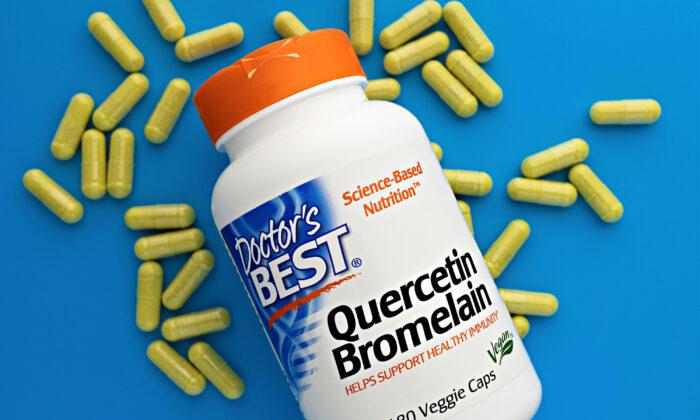Evidence suggests hydroxychloroquine works for COVID-19 because it acts as a zinc ionophore, meaning it shuttles zinc into your cells. Canadian and Chinese researchers are collaborating on a study to assess the effectiveness of this alternative powerful immune booster and broad-spectrum antiviral.
STORY AT-A-GLANCE
- A Chinese trial comparing clinical outcomes of COVID-19 patients treated with the antimalarial drug hydroxychloroquine and those receiving standard of care alone reports “disappointing” results.
- The hydroxychloroquine group only had a 28-day negative conversion rate of 85.4 percent compared to the control group’s rate of 81.3 percent. No difference in the alleviation of symptoms was observed between the two groups.
- The study did not, however, use supplemental zinc, which helps prevent viral replication. Evidence suggests hydroxychloroquine works for COVID-19 because it acts as a zinc ionophore, meaning it shuttles zinc inside your cells.
- A Brazilian chloroquine trial stopped the high-dose arm of the study early due to patients developing ventricular tachycardia, a dangerous heart rhythm problem. Chloroquine is known to be more toxic than hydroxychloroquine.
- Quercetin is a naturally occurring zinc ionophore. Taken with zinc, it may be helpful to prevent and potentially treat COVID-19. Research is currently underway to assess quercetin’s effectiveness against COVID-19.
Hydroxychloroquine Trial Reports Disappointing Results
Seventy-five COVID-19 patients at 16 Chinese treatment centers received 1,200 milligrams of hydroxychloroquine (HCQ) in addition to standard of care for the first three days of treatment, followed by a maintenance dose of 800 mg per day for two weeks in mild to moderate cases and three weeks for severe cases. Another 75 patients received standard of care only.The primary endpoint was a 28-day negative conversion rate of SARS-CoV-2 (viral load reduction). Secondary endpoints included an improvement rate of clinical symptoms and the normalization of C-reactive protein and blood lymphocyte count within 28 days.
According to the authors, the hydroxychloroquine group only had a 28-day negative conversion rate of 85.4 percent compared to the control group’s rate of 81.3 percent. No difference in the alleviation of symptoms was observed between the two groups.
Adverse events were also higher in the hydroxychloroquine group (30 percent) compared to controls (8.8 percent). You can find a listing of the adverse events in Table 2 of the study. (4)
“A significant efficacy of HCQ [hydroxychloroquine] on alleviating symptoms was observed when the confounding effects of anti-viral agents were removed in the posthoc analysis (Hazard ratio, 8.83, 95 percent CI, 1.09 to 71.3).
“This was further supported by a significantly greater reduction of CRP [c-reactive protein] (6.986 in SOC [standard of care] plus HCQ versus 2.723 in SOC, milligram/liter, P=0.045) conferred by the addition of HCQ, which also led to more rapid recovery of lymphopenia, albeit no statistical significance.

Limitations of This Study
A few things are worth noting about this study. Aside from its small size, the patients received a far higher dose of hydroxychloroquine than typically used in the U.S.—1,200 milligrams for the first three days, followed by 800 mg per day for two to three weeks, compared to the U.S. Food and Drug Administration’s suggested dosage of 800 mg on day one, followed by 400 mg per day for four to seven days, depending on severity. (6)“Much of the pathogenesis of critical illness seems to result from dysregulated inflammation, rather than direct viral cytopathic effect. This raises a question of whether any antiviral treatment will be beneficial for late-presenting patients with severe illness.
“Of course, it is possible that earlier use of hydroxychloroquine could be beneficial (e.g., perhaps at the first signs of illness on an out-patient basis). This is under investigation and additional data is likely to be forthcoming soon. Even if this does work in the outpatient clinic, it would probably have little impact on the management of these patients within the intensive care unit.”
This Study Failed to Use Zinc
Perhaps most important, however, is the absence of zinc, which Farkas does not mention. We now know that chloroquine and hydroxychloroquine act as zinc ionophores, (7)(8) meaning they shuttle zinc into your cells, and zinc appears to be a “magic ingredient” required to prevent viral infection. (9)If given early, zinc along with a zinc ionophore should, at least theoretically, help lower the viral load and prevent the immune system from becoming overloaded. Without zinc, hydroxychloroquine may be more or less useless.
“Besides direct antiviral effects, CQ/HCQ [chloroquine and hydroxychloroquine] specifically target extracellular zinc to intracellular lysosomes where it interferes with RNA-dependent RNA polymerase activity and coronavirus replication.
Chloroquine Trial Stopped Due to Side Effects
In related news, a Brazilian chloroquine trial (11) (12) stopped the high-dose arm of the study early due to patients developing ventricular tachycardia, a dangerous heart rhythm problem. As reported by Live Science: (13)“The Brazilian researchers planned to enroll 440 people in their study to test whether chloroquine is a safe and effective treatment for COVID-19. Participants took either a ‘high dose’ of the drug (600 milligrams twice daily for 10 days) or a ‘low dose’ (450 mg for five days, with a double dose only on the first day) ...
However, chloroquine (Aralen) appears to be a more hazardous choice than hydroxychloroquine (Plaquenil), which is a derivative of chloroquine. (18) Both use the same pathway, but hydroxychloroquine is thought to be about 40 percent less toxic (19) and, overall, has a safer side effect profile. (20)(21)

Quercetin–A Safer Alternative to Hydroxychloroquine?
Considering the risks of chloroquine and hydroxychloroquine, and the evidence suggesting the reason these drugs work for COVID-19 is because they act as zinc ionophores, it’s worth questioning whether other more natural zinc ionophores can be used.One prime example would be quercetin, which is a naturally occurring zinc ionophore. (22) As reported by the Green Stars Project, (23) “Researchers from Oak Ridge National Lab used the world’s most powerful supercomputer, SUMMIT, to look for small molecules that might inhibit the COVID-19 spike protein from interacting with human cells and, interestingly, quercetin is fifth on that list.” (24)
Quercetin is one of only three natural products found to inhibit the SARS-CoV-2 spike protein. The only natural product found to be slightly more effective is luteolin, a polyphenol found in radicchio, green peppers, serrano and green hot chili peppers, chicory, celery, and many other foods. (25)
Quercetin is another flavonols compound found in a variety of foods, including apples, Brassica vegetables, capers, onions, tea, and tomatoes, just to name a few. It’s also contained in medicinal products such as ginkgo biloba, St. John’s Wort (Hypericum perforatum), and elderberry (Sambucus canadensis).
Research has already demonstrated that quercetin is a powerful immune booster and broad-spectrum antiviral. As noted in a 2016 study (26) in the journal Nutrients, quercetin’s mechanisms of action include the inhibition of lipopolysaccharide (LPS)-induced tumor necrosis factor α (TNF-α) production in macrophages.
TNF-α is a cytokine involved in systemic inflammation, secreted by activated macrophages, a type of immune cell that digests foreign substances, microbes, and other harmful or damaged components. Quercetin also inhibits the release of pro-inflammatory cytokines and histamine by modulating calcium influx into the cell. (27)
According to this paper, quercetin also stabilizes mast cells and has “a direct regulatory effect on basic functional properties of immune cells,” which allows it to inhibit “a huge panoply of molecular targets in the micromolar concentration range, either by down-regulating or suppressing many inflammatory pathways and functions.” (28)
Another 2016 study (29) concluded it helps modulate the NLRP3 inflammasome, an immune system component involved in the uncontrolled release of pro-inflammatory cytokines that occurs during a cytokine storm.
Quercetin Being Studied for Its Use Against COVID-19
The good news is researchers are in fact planning to study the use of quercetin against COVID-19. (34) As reported by Maclean’s, (35) Canadian researchers Michel Chrétien and Majambu Mbikay began investigating quercetin in the aftermath of the SARS epidemic that broke out across 26 countries in 2003.They discovered a derivative of quercetin provided broad-spectrum protection against a wide range of viruses, including SARS. (36)(37) The Ebola outbreak in 2014 offered another chance to investigate quercetin’s antiviral powers and, here too, they found it effectively prevented infection in mice, “even when administered only minutes before infection.”
“The Canadian and Chinese scientists would collaborate on the trials, which would include about 1,000 test patients. Chrétien and Mbikay plan to join colleagues from the non-profit International Consortium of Antivirals—which Chrétien co-founded with Jeremy Carver in 2004 as a response to the SARS epidemic—in manning a 24/7 communications center as soon as clinical trials go ahead.
Dosage Recommendations for Quercetin and Zinc
While the COVID-19 pandemic is in full swing—and for any future influenza season—supplementing with quercetin and zinc may be a good idea for many, in order to boost your immune system’s innate ability to ward off infectious illness. As for dosage, here are some basic recommendations:- Quercetin: According to research from Appalachian State University in North Carolina, taking 500 mg to 1,000 mg of quercetin per day for 12 weeks results in “large but highly variable increases in plasma quercetin ... unrelated to demographic or lifestyle factors.” (39)
- Zinc (and copper): When it comes to zinc, remember that more is not necessarily better. In fact, it can backfire. When taking zinc, you also need to be mindful of maintaining a healthy zinc-to-copper ratio. As noted by Chris Masterjohn, who has a doctorate in nutritional sciences,(40) in an article (41) and series of Twitter posts: (42)
“In one study, 300mg/day of zinc as two divided doses of 150 mg zinc sulfate decreased important markers of immune function, such as the ability of immune cells known as polymorphonuclear leukocytes to migrate toward and consume bacteria.
“The most concerning effect in the context of COVID-19 is that it lowered the lymphocyte stimulation index threefold. This is a measure of the ability of T cells to increase their numbers in response to a perceived threat. The reason this is so concerning in the context of COVID-19 is that poor outcomes are associated with low lymphocytes ...
“The negative effect on lymphocyte proliferation found with 300 mg/day and the apparent safety in this regard of 150 mg/d suggests that the potential for hurting the immune system may begin somewhere between 150-300 mg/d ...
“It is quite possible that the harmful effect of 300 mg/d zinc on the lymphocyte stimulation index is mediated mostly or completely by induction of copper deficiency ...
“The negative effect of zinc on copper status has been shown with as little as 60 mg/d zinc. This intake lowers the activity of superoxide dismutase, an enzyme important to antioxidant defense and immune function that depends both on zinc and copper ...
“A study done with relatively low intakes of zinc suggested that acceptable ratios of zinc to copper range from 2:1 to 15:1 in favor of zinc. Copper appears safe to consume up to a maximum of 10 mg/d.
How Much Zinc Do You Need?
Masterjohn goes into even greater detail in his zinc article, discussing maximum absorption rates and much more. (43) In summary, he recommends taking 7 mg to 15 mg of zinc four times a day, ideally on an empty stomach, or with a phytate-free food.The recommended dietary allowance in the U.S. is 11 mg for adult men and 8 mg for adult women, with slightly higher doses recommended for pregnant and breastfeeding women, (44) so we’re not talking about taking significantly higher dosages.
Additionally, you can take one zinc acetate lozenge per day, which will provide you with an additional 18 mg of zinc. If you’re exposed to the virus, take one additional lozenge after the exposure.
Masterjohn stresses that you’ll want to keep your total zinc intake below 150 mg per day to avoid negative effects on your immune system. He also recommends getting at least 1 mg of copper from food and supplements for every 15 mg of zinc you take.
Keep in mind that there are many food sources of zinc, so a supplement may not be necessary. I eat about three-fourths of a pound of ground bison or lamb a day, which has 20 mg of zinc. I personally don’t take any zinc supplement other than what I get from my food, which is likely in an optimal form to maximize absorption.






